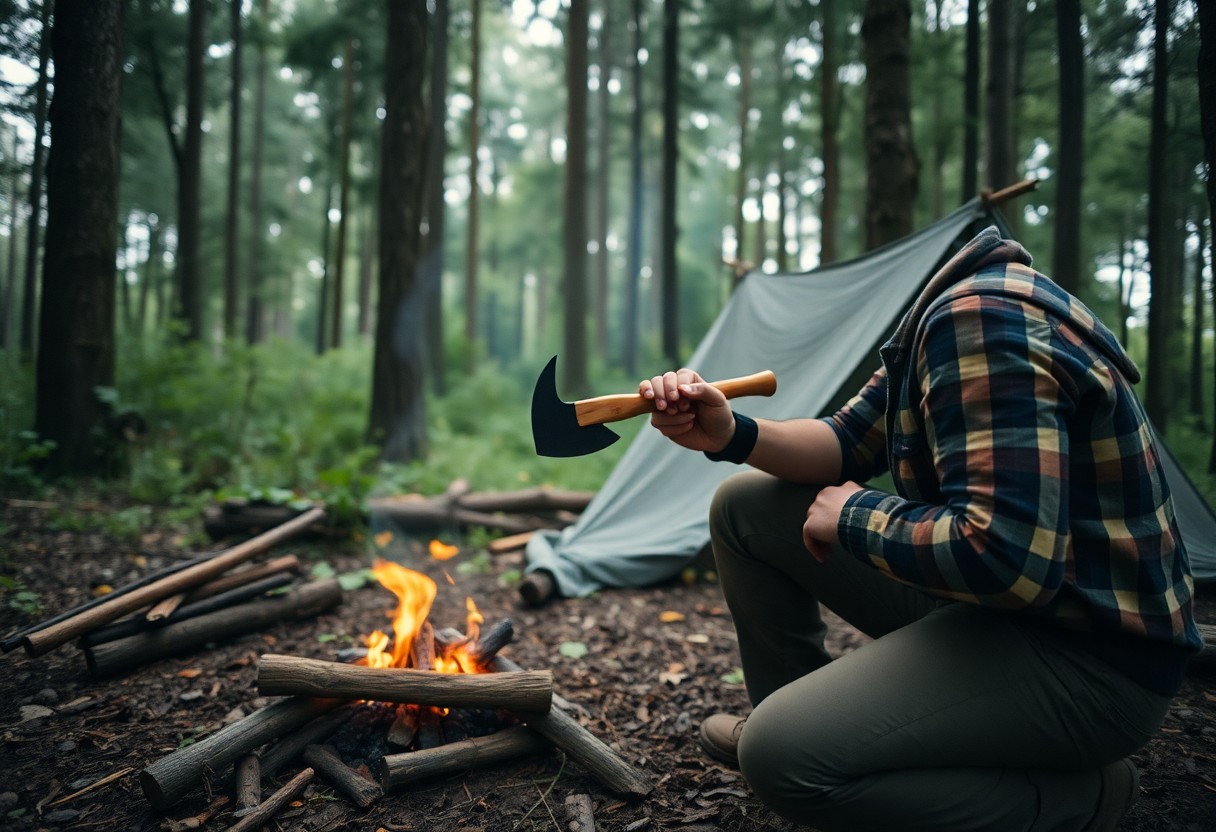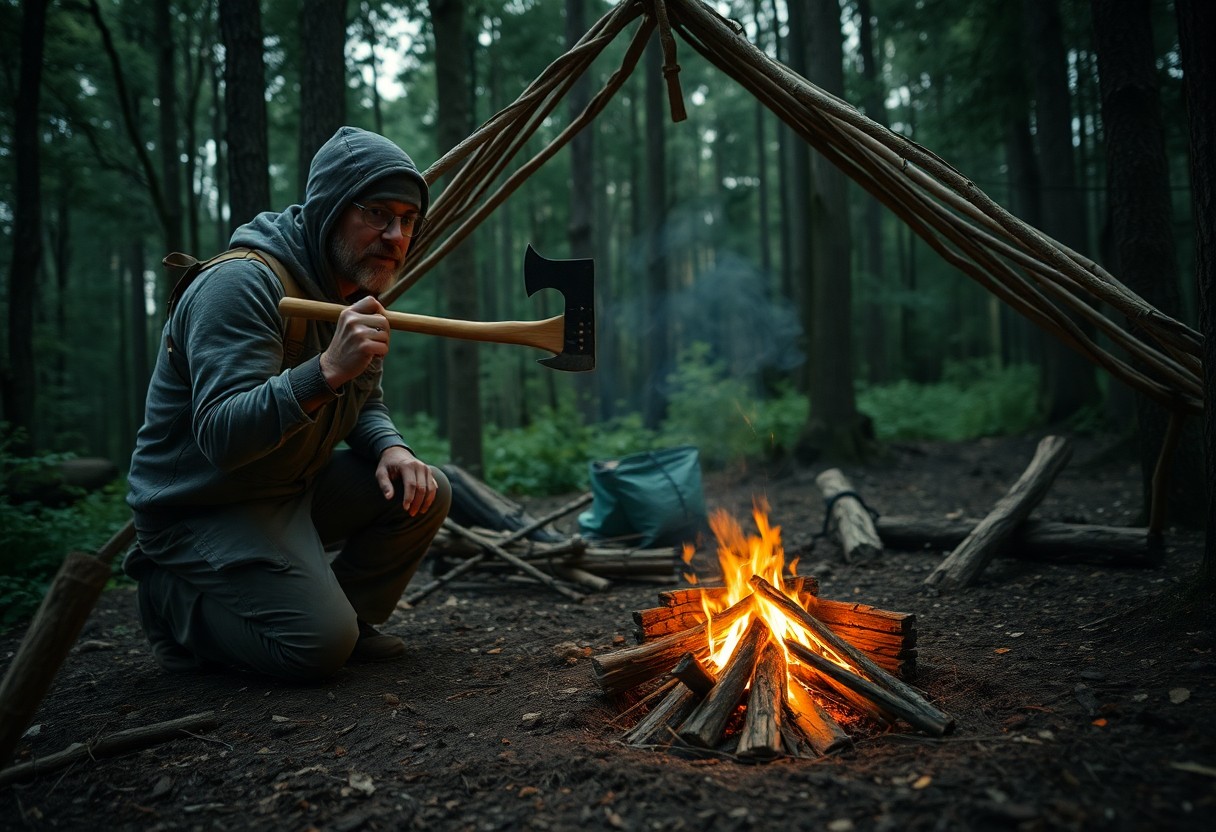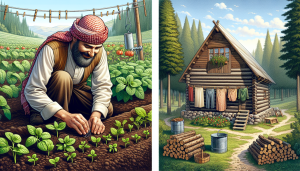Survival in the wild requires understanding the fundamentals of bushcraft, where your ability to adapt can mean the difference between life and death. As a prepper, it’s vital to develop your wilderness survival skills to handle unforeseen challenges. In this article, you will learn about imperative techniques such as shelter building, fire making, and foraging, ensuring that you’re well-prepared for any scenario. By mastering these skills, you will tap into your inherent resourcefulness, enabling you to thrive in nature while confidently protecting your loved ones in times of crisis.
Key Takeaways:
- Basic Survival Skills: Mastering fundamental techniques, such as fire-making and shelter construction, is necessary for anyone venturing into the wild.
- Resource Utilization: Learning to identify and utilize natural resources, like edible plants and freshwater sources, is vital for long-term survival.
- Navigation Techniques: Understanding how to navigate using natural landmarks and basic tools, like a compass, helps in avoiding disorientation.
- First Aid Knowledge: Acquiring basic first aid and emergency response skills ensures preparedness for unexpected injuries or health issues in the wilderness.
- Mindset and Planning: Adopting a proactive survival mindset and planning for various scenarios enhances readiness for wilderness challenges.

Essential Tools and Gear
While mastering wilderness survival skills, having the right tools and gear significantly enhances your preparedness. Equipping yourself with versatile, durable items allows you to tackle various challenges you may encounter in the wilderness. Prioritize functionality and reliability in each selection, ensuring your gear contributes to your overall survival strategy.
Selecting the Right Knives
Against the backdrop of survival, the right knife is an invaluable tool. A sturdy, multi-functional knife allows you to perform various tasks, from crafting tools to preparing food. When choosing your knife, consider blade size, material, and grip to ensure it fits comfortably in your hand and meets your specific needs.
Must-Have Survival Gear
Behind any successful survival strategy is a collection of crucial gear designed to keep you safe and comfortable in the wild. Your survival gear should include a reliable fire starter, a water filtration system, and a durable shelter option. This equipment not only offers peace of mind but also significantly increases your ability to thrive in the wilderness.
Consequently, investing in must-have survival gear can mean the difference between life and death in critical situations. A quality fire starter allows you to create warmth and cook food, while a water filtration system ensures access to safe drinking water. Additionally, a sturdy shelter provides crucial protection against the elements. Together, these tools address the most pressing survival needs—sustenance, safety, and shelter—creating a solid foundation for your wilderness adventures.
Fire Crafting Techniques
If you’re venturing into the wilderness, mastering fire crafting techniques is necessary for survival. A well-built fire not only provides warmth and light but can also be used for cooking and signaling for help. By learning various methods and maintaining safety protocols, you can ensure that you can always create and manage a fire effectively, turning a survival situation into a manageable experience.
Methods for Starting a Fire
Below, you’ll find various methods for starting a fire that rely on different techniques and materials. From using traditional friction methods like the bow drill and hand drill to modern techniques such as matches and fire starters, exploring these options will equip you with the skills to ignite a flame successfully, even in less-than-ideal conditions.
Fire Safety and Maintenance
Above all, safety and maintenance are vital when it comes to managing your fire. Proper precautions ensure that your fire remains contained and does not pose a risk to you or the surrounding environment. A well-maintained fire allows you to enjoy its benefits without jeopardizing your safety.
Starting with the fundamentals, always construct your fire in a safe location, away from flammable materials and in a designated fire pit if possible. Keep a bucket of water or sand nearby to quickly extinguish the fire if necessary. As the fire burns, control its size by adjusting the fuel and ensuring that it doesn’t grow too large. Extinguishing your fire completely before leaving ensures you minimize the risk of wildfires and protects the natural environment. Prioritize responsibility as a fire keeper to ensure both your safety and the wellbeing of the wilderness.
Shelter Building Skills
Many preparation skills revolve around efficient shelter building, a vital aspect of wilderness survival. Being able to create a reliable refuge not only provides you with protection from the elements but also gives you a sense of safety and peace of mind. Mastering this skill can greatly enhance your outdoor experiences and increase your chances of survival in unexpected situations.
Types of Natural Shelters
Building a shelter can be achieved through various natural forms available in the wilderness. Different environments offer unique resources. Below are some common types categorized in the table:
| Natural Shelter Type | Description |
| Debris Hut | Utilizes natural debris as insulation |
| Lean-to | Constructed against natural structures like trees |
| Cave | Natural cavities providing excellent cover |
| Snow Cave | Ideal for cold climates and made from compacted snow |
| A-frame Shelter | Supports resources found in forests |
After understanding the various types, you’ll be ready to utilize what nature provides effectively.
Tips for Constructing an Effective Shelter
Building an effective shelter involves several considerations to ensure your safety and comfort. By focusing on imperative factors, you can create a sustainable haven. Here are some important tips:
- Choose a location away from hazards, like flood-prone areas.
- Ensure good drainage to prevent water accumulation.
- Gather ample insulation materials for warmth.
- Construct a solid framework to withstand winds.
- Leave no trace to respect your environment.
This shelter-building knowledge can significantly enhance your preparedness in the wild.
Among the various aspects of effective shelter construction, selecting the right location plays an imperative role. Position your shelter strategically by considering the environment. Here’s what to focus on:
- Identify natural windscreens for reduction of exposure.
- Look out for natural resources like wood and leaves.
- Use the lay of the land to shelter from rain.
- Consider animal behavior to avoid predators.
- Avoid areas with dangerous wildlife.
This approach helps ensure your safety and enhances the survival experience.
Considering the elements affecting shelter construction, it’s imperative to prioritize specific elements that can influence your success. Pay attention to the following: temperature, wind direction, water availability, and proximity to food sources. These factors can make a significant difference in your comfort and safety during your stay outdoors. It’s imperative to conduct a thorough assessment of the area before settling in, ensuring you’re well-prepared for any situation.
Foraging and Food Preparation
All bushcrafters need to master the art of foraging and food preparation to make the most of nature’s bounty. Understanding which plants are edible, how to collect them safely, and the methods for preserving your finds can significantly boost your chances of survival in the wilderness. With a bit of knowledge and practice, you’ll be able to nourish yourself using the resources around you, ensuring that hunger won’t become a barrier to your outdoor adventures.
Identifying Edible Plants
Identifying edible plants is an imperative skill for anyone venturing into the wilderness. You should learn to recognize common wild edible species, such as dandelions, clover, and various berries. Having a reliable field guide, or even a smartphone app, can aid you in distinguishing these plants from harmful lookalikes, helping you to make informed choices in foraging.
Techniques for Food Preservation
One effective way to extend the life of your foraged food is through techniques for food preservation. By employing methods such as drying, smoking, or fermenting, you can significantly reduce waste and ensure that you have sustenance available when fresh food isn’t accessible.
For instance, drying herbs and fruits can prevent spoilage, while smoking fish or meats not only imparts flavor but also extends their shelf life. Fermentation can turn vegetables into nutritious delicacies, boosting both flavor and preservation. Mastering these methods allows you to create a diverse array of storage options, ensuring your hard-earned foraged edibles remain a vital resource for future meals.
Navigation and Orientation
Unlike urban environments, where street signs and maps guide your way, navigating in the wilderness demands a different set of skills. Understanding your surroundings and orienting yourself can mean the difference between safety and disorientation. Mastering both technological tools and natural methods will empower you on your wilderness adventures, ensuring you find your way with confidence.
Using a Compass and Map
Along with mastering your compass, the ability to read a topographical map is necessary for effective navigation in the wilderness. Knowing how to combine these tools allows you to plot your course accurately, taking into account both elevation changes and terrain features. Practicing this skill will build your confidence and ensure that you can navigate even the most challenging landscapes.
Natural Navigation Skills
Before relying solely on devices, you should hone your ability to navigate using natural signs. Observing the position of the sun, moon, or stars can provide you with critical information about direction. Additionally, familiarizing yourself with the local environment and how flora and fauna behave can further enhance your ability to steer your way through the wilderness.
Consequently, understanding natural navigation skills can be an invaluable asset in survival situations. The sun rises in the east and sets in the west, providing a fundamental way to estimate direction during daylight hours. At night, the North Star (Polaris) serves as a reliable reference for finding true north. Additionally, observing landmarks in your environment, such as the direction in which moss grows on trees or the flow of water, can guide your way. Being adept in these skills will allow you to navigate confidently, even when equipped tools fail, reducing the risk of becoming lost in the wild.
First Aid in the Wilderness
Keep your first aid skills sharp and your supplies stocked, as wilderness adventures can lead to unexpected injuries. Situations may require quick thinking and timely care, so being prepared with basic first aid knowledge can save lives. Whether you’re facing minor cuts or more serious emergencies, equipping yourself with vital training will enhance your confidence in navigating the wild with safety and assurance.
Essential First Aid Supplies
Below is a list of vital first aid supplies you should always carry in your wilderness kit: sterile gauze pads, adhesive bandages, antiseptic wipes, medical tape, scissors, tweezers, and a basic first aid manual. Additionally, including a tourniquet, a CPR face shield, and any personal medications will ensure you are prepared for various injuries that may arise during your outdoor adventures.
Common Injuries and Treatments
Treatments for common injuries include effective methods such as cleaning and dressing wounds, applying pressure to stop bleeding, and immobilizing fractures. You may also face ailments like sprains or insect bites, which can benefit from immediate intervention, such as resting the affected area or using antihistamines for allergic reactions.
And as you venture into the wilderness, be aware of common injuries like scrapes, cuts, and sprains, which can occur without a moment’s notice. For cuts, ensure you clean the area with antiseptic wipes, apply pressure to reduce bleeding, and cover it with a sterile bandage. Sprains may require you to rest, ice, compress, and elevate the injured area. If an injury seems severe, such as a possible fracture or heavy bleeding, seek help as soon as possible to prevent further complications. Your ability to recognize these situations and act quickly can significantly improve outcomes and ensure your safety in the wilderness.
Summing up
Now that you understand the imperative bushcraft basics, you are better equipped to handle wilderness survival situations. Developing these skills will enhance your confidence and self-reliance, enabling you to find food, water, and shelter while navigating the great outdoors. By practicing regularly and continually honing your abilities, you can ensure that you are prepared for any adventure or emergency that may come your way. Your journey into wilderness survival starts here, so embrace the learning process and enjoy the exploration ahead.
FAQ
Q: What is Bushcraft?
A: Bushcraft refers to a set of skills and techniques that allow individuals to thrive in the wilderness. It encompasses a variety of practices including shelter building, fire making, foraging, and navigation. Individuals trained in bushcraft can utilize natural resources to survive and be self-sufficient in remote areas.
Q: What are the key skills covered in ‘Bushcraft Basics’?
A: ‘Bushcraft Basics’ covers several important skills such as understanding how to identify edible plants, building a temporary shelter, purifying water, starting and maintaining a fire, and navigating using natural landmarks. These skills are designed to help preppers and outdoor enthusiasts become proficient in survival situations.
Q: Is prior experience necessary to learn bushcraft skills?
A: No prior experience is required to learn bushcraft skills. ‘Bushcraft Basics’ is designed for individuals at all skill levels, from beginners to those with some outdoor experience. The content is presented in an accessible way, allowing anyone interested in wilderness survival to enhance their knowledge and capabilities.
Q: What materials or tools are recommended for practicing bushcraft skills?
A: Basic tools for bushcraft include a sturdy knife, an axe or saw, a fire starter, and cordage. Additional items such as a compass, a tarp for shelter, and a first aid kit can also be helpful. However, the book emphasizes the importance of using natural resources found in the environment, encouraging learners to be resourceful and adaptive.
Q: How can ‘Bushcraft Basics’ benefit preppers specifically?
A: ‘Bushcraft Basics’ can significantly benefit preppers by equipping them with skills to survive in situations where conventional resources may not be available. The knowledge gained can enhance one’s ability to create a sustainable lifestyle, learn effective methods for gathering food and water, and improve overall preparedness for emergencies in a wilderness setting.




